
The Australian Bureau of Statistics (ABS) has released the Australian Demographic Statistics for the September quarter of 2013.
According to the ABS, Australia’s population grew by 1.78% in the year to September 2013, marginally below the rate recorded in the year to June 2013, but well above the 30-year average of 1.4%.
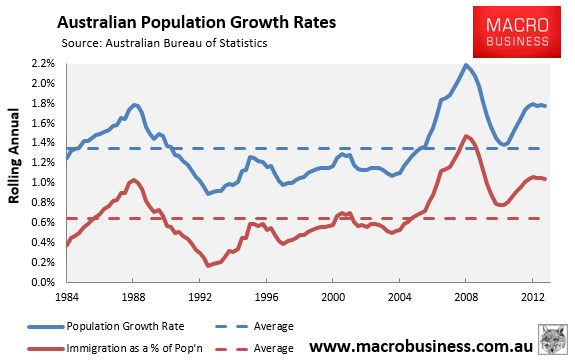
The growth in the number of persons in the year to September 2013 was 405,500, which was 149,467 above the 30-year average:
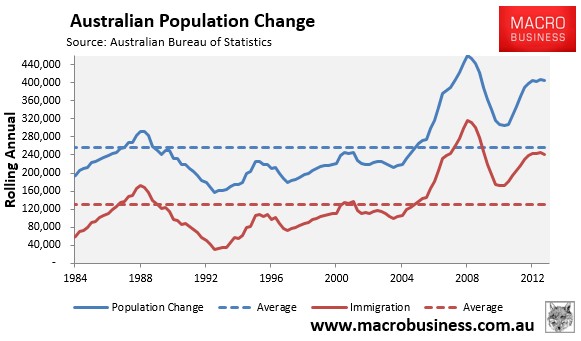
Australia’s population growth continues to be driven by net overseas migration (NOM) – defined as those residing in Australia for 12 months or more (see next chart).
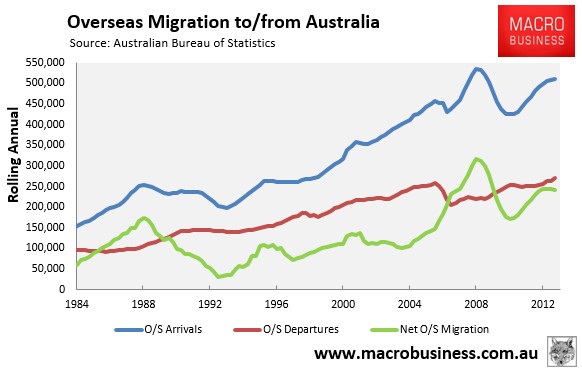
While NOM has declined from a peak of 315,700 in calendar year 2008 to 241,000 in the year to September 2013 – it remains well above the average level of 129,587.
Moreover, as shown below, the proportion of population growth derived from NOM – 59% in the year to September 2013 – remains well above the 30-year average of 48%.
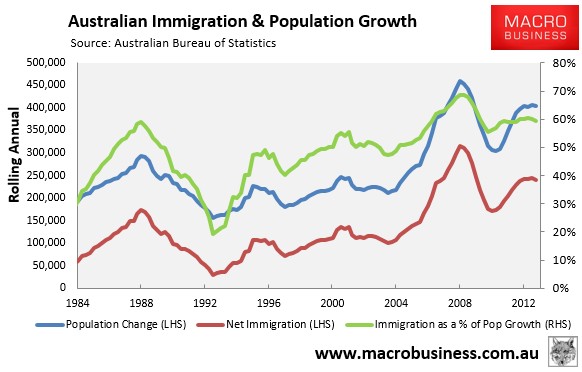
Separate data compiled by the ABS, which measures permanent arrivals/departures into Australia only, suggests that nearly two-thirds of NOM is temporary, although a proportion of these arrivals do become permanent residents at a later date.
As shown in the next chart, the number of net permanent arrivals into Australia was 59,330 in the 12 months to January 2014, which is tracking just below the 30-year average of 65,260 (see next chart).
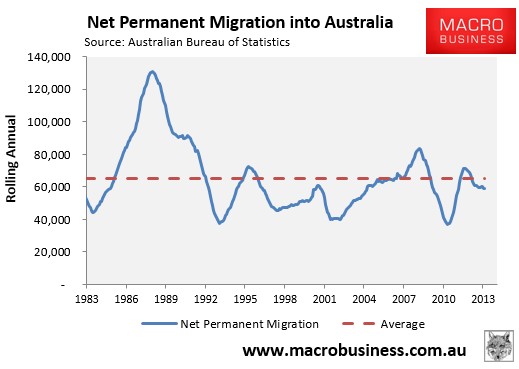
While natural increase – the difference between births and deaths – is not the key driver of Australia’s population growth, it too is running at levels well above the 30-year average (see next chart).
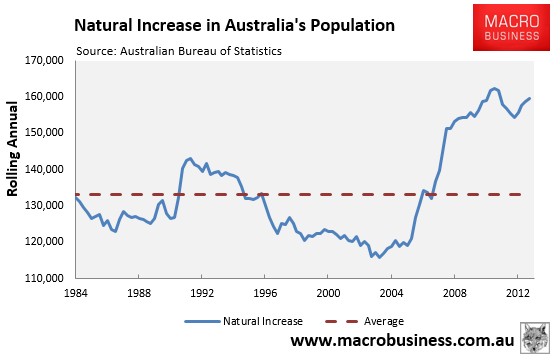
Population growth into Australia’s key resources state – Western Australia – continues to moderate, although it remains at high levels. In the year to September 2013, Western Australia’s population grew by 3.1% (down from a peak of 3.7%) and was well above the national average (1.8%):
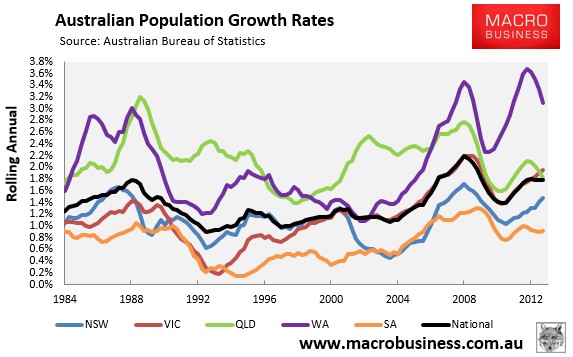
In sheer number terms, Victoria remains the leader, with its population growing by a whopping 110,537 in the year to September 2013, just ahead of New South Wales (108,067):
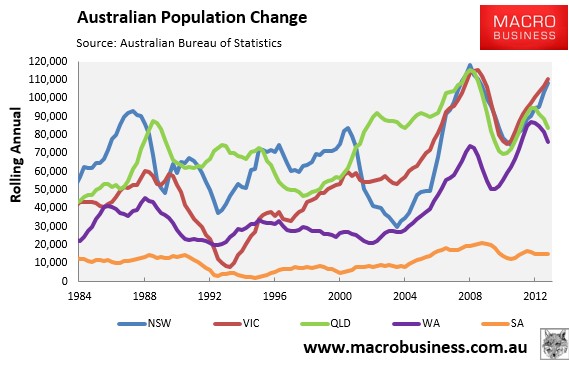
With the population continuing to grow at such a rapid pace, Australia’s infrastructure deficit is likely to worsen unless all levels of government embark on a large scale investment program.

